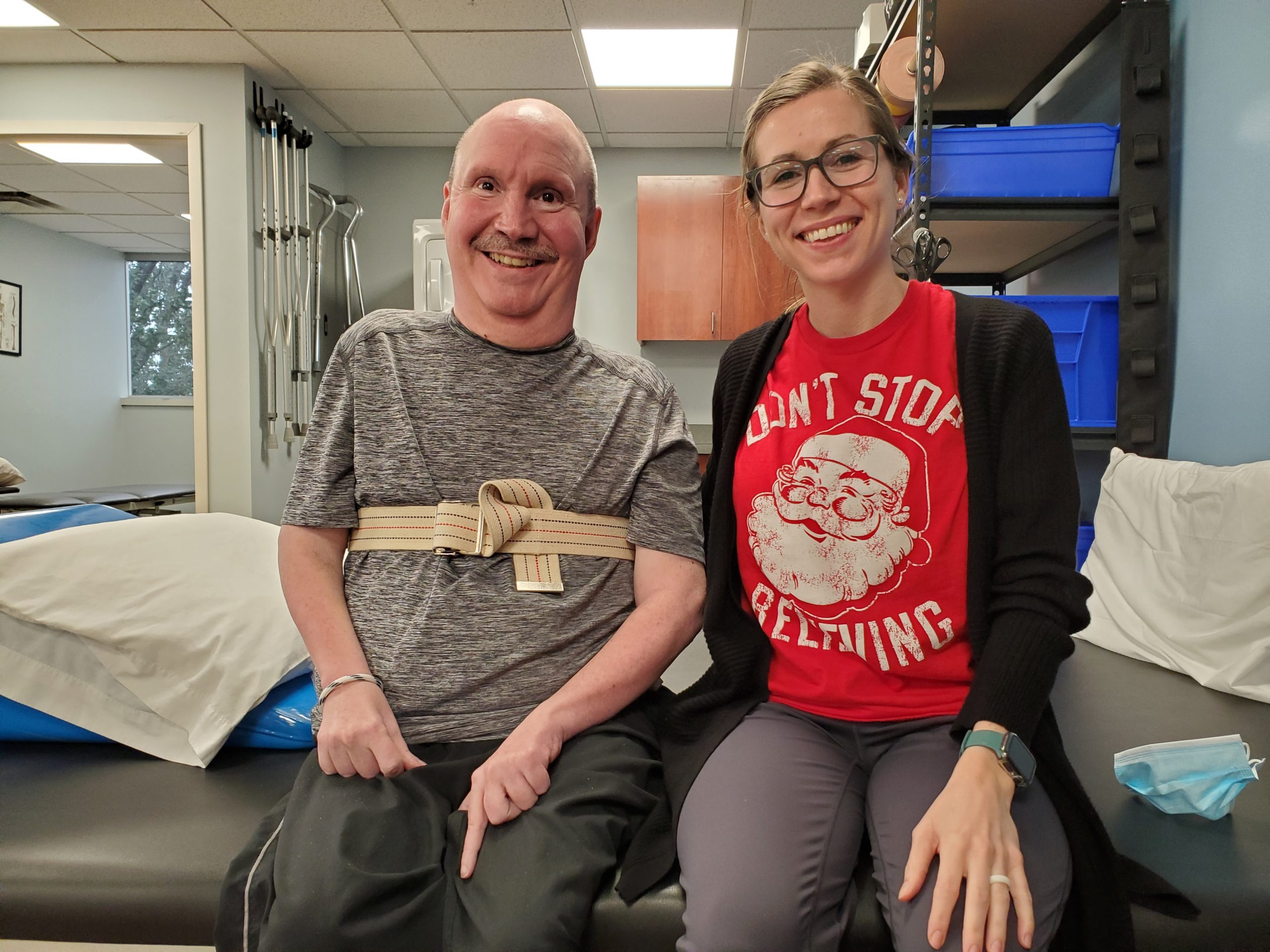Future PT Options For My Patient with SMA

From left, SMA patient Michael Morale smiles with physical therapist Emily Jones. (Photo courtesy of Michael Morale)
Since beginning Michael’s physical therapy in October 2017, we have been focusing on improving flexibility and increasing stability in his core musculature. This has greatly improved Michael’s ability to ascend and descend ramps with improved stability and has reduced his pain while sitting throughout the day in his wheelchair. Also, these activities have greatly improved his lung capacity, which has been proven by his twice-a-year pulmonary function tests. [PFTs] This has all been in preparation for Scholar Rock getting approval for their muscle-targeted therapy, called apitegromab. When this new treatment receives FDA approval, we will have more of an ability to focus on building muscle mass in specific areas to continue improving and increasing independence. The available treatments that have already been FDA approved for patients with SMA are Spinraza, Zolgensma, and Evrysdi.
Spinraza and Evrysdi were designed to slow or stop the progression of SMA, but neither of these treatments are able to target and address muscle building. While some patients have noticed a small amount of increased strength, including my patient, Michael, one of the key problems is addressing the latent form of myostatin that SMA patients have. Myostatin is a growth inhibitor, which keeps the body from building muscle strength and mass. Scholar Rock’s potential treatment, apitegromab, will reduce the level of myostatin in patients with SMA, thus giving them the ability to possibly target specific muscle groups. Given the fact that Scholar Rock’s treatment will not be available until possibly sometime within 2023, we will continue our primary goals to be continuing flexibility and stability of muscles as we can. Some exercises we currently perform help to increase the length of Michael’s muscles, which will further benefit Michael if and when he’s able to take a combination therapy of Spinraza and apitegromab because there will be more muscle length to gain muscle strength.
Prior to this event, there are other ideas for increasing stability and flexibility. There are options for water therapy with the correct equipment to allow for safe entrance from Michael’s wheelchair into the water, with a pool large enough for me and him as well as one other person to ensure safety. The clinic that I currently work for is considering purchasing such a pool. If we receive approval to install this pool, there would be many exercises we could perform in the water. We are not only looking at getting approval for this pool, but we are also looking into a safe way to transfer Michael from his wheelchair to the water. This may be an automated hoist or even a ramp, and Michael will be included in this conversation so that we can ensure that he feels safe with these decisions.
Getting in the water would be beneficial for Michael to create a more offloading environment. We would be able to work on passive ankle pumps in the water to help reduce edema in both of his ankles and feet, as the water would help to act as an added pump. We could also continue to work on increasing his flexibility by performing passive range of motion activities, such as increasing the length of his hip flexors in an off-weighted position as well as working on knee extension.
Going forward in the future, once there is an approved muscle-targeted therapy for people with SMA, having access to the water would give us a much easier way to begin building strength as we can use the water as resistance. There are many options for different positions in the water for exercising. We can perform activities sitting in a chair in the water, as well as lying in a supine position with support for floating. While in a supine floating position, we can work on the cervical range of motion, and can even utilize the water for resistance.
There are many options and many different approaches for physical therapy for people who have been diagnosed with SMA. Depending on the patient’s location and accessibility, there is always something that can be modified and performed to improve independence and increase comfort. As future treatments and therapies are approved, we will have to change and shift our goals as the goals of the patients change. Always being open and honest about expectations and having a good relationship with your patient will make these transitions smooth.



